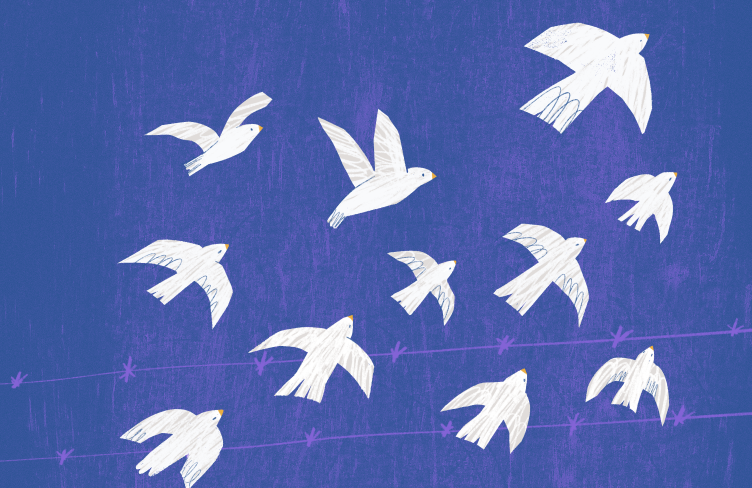
Key points
- Solitary confinement practices continue worldwide because of a lack of alternatives.
- Experts from around the world have formulated the International Guiding Statement on Alternatives to Solitary Confinement, which provides recommendations and measures to reduce – and hopefully ultimately abolish – solitary confinement.
- The Guiding Statement includes recommendations that can be implemented as short-term, medium-term and long-tern alternatives to solitary confinement. It also seeks to address the structural problems that result in a solitary confinement ‘pipeline’.
- The Guiding Statement is aimed at civil society organisations, prison authorities and legislatures.
There is international consensus that solitary confinement is extremely harmful to the mental and physical health of individuals. Increasingly, international law seeks to limit the use of solitary confinement for vulnerable groups. Yet individuals worldwide continue to be held in solitary confinement. For want of better alternatives, solitary confinement has become a means of managing the existing challenges in prison settings. Prison authorities commonly claim that, in response to certain individual cases, there are no alternatives except to place that individual in solitary confinement, including people belonging to underprivileged populations.
For this reason, Physicians for Human Rights Israel and Associazione Antigone convened a group of experts to prepare the International Guiding Statement on Alternatives to Solitary Confinement. The Guiding Statement aims to bridge the gap between international law and medical agreement on the harm caused by solitary confinement and the continued use of the practice, by presenting a consensus on measures that can help reduce and ultimately abolish this practice.
The Guiding Statement was shaped by a group of international experts — correctional staff, prison administrators, mental health professionals, and academics — who have either implemented alternatives to solitary confinement or proposed alternatives to the practice.
The Guiding Statement is shaped by two understandings. The first is that the placement of individuals in solitary confinement is a symptom of wider systemic problems in prison settings. To tackle solitary confinement, the root causes – the solitary confinement ‘pipeline’ that results in the placement of individuals in isolation – must be addressed. This pipeline includes both the conditions within prisons – such as overcrowding, lack of suitable mental health care, a punitive approach in managing prisons – and wider structural issues, such as mass incarceration and criminalisation of underprivileged groups, insufficient mental health care in the community and the use of incarceration settings as holding sites for individuals with mental health issues. The second is that, until these structural changes are addressed, short-term measures must be implemented to ensure that individuals currently held in solitary confinement can be taken out. As stakeholders increasingly implement the recommendations of the Guiding Statement, more tools and alternatives to solitary confinement will be available for use.
The recommendations in the Guiding Statement are divided into five sections.
Documentation, oversight and accountability
Understanding the way in which and the extent to which solitary confinement is carried out, as well as the individuals most likely to be targeted, is a necessary step in reducing and ultimately abolishing the practice. The Guiding Statement provides important innovations and specificity about the kind of accountability measures we still so desperately need. These include precise and individualised records on steps taken to avoid using solitary; whether the individual is from an underprivileged group; and what alternatives to solitary confinement had first been attempted. More accountable record-keeping must be coupled with improved oversight, including by judges. Despite often taking part in prolonging solitary confinement measures, judges rarely conduct on-site visits to verify the accuracy of data given by prison authorities. As such, the Guiding Statement recommends the institutionalisation and regularisation of on-site visits by judges involved in solitary confinement cases.
Alternative short-term and medium-term measures
Around the world, prison authorities cite several justifications for using solitary confinement, including to minimise friction, to respond to violent acts, as a disciplinary sanction, to prevent self-harm, to address security concerns, and upon the request of an individual. The Guiding Statement provides recommendations on how to remove people who are currently placed in solitary confinement, how to deal differently in the situations outlined above, and on the role of physicians and prison staff within such contexts.
For example, should an individual self-harm, the Guiding Statement recommends an immediate assessment by mental health professionals, an individualised care plan, and that de-escalation measures be put in place by prison staff. As prison authorities and national legislatures take steps to implement these recommendations, more support will be available for alternative measures; for example, establishing an independent body of mental health professionals, which will also be authorised to recommend a person's release from prison.
Should an individual request to be placed in solitary confinement, the Guiding Statement recommends a process to understand the underlying reasons behind that request, and then find a different arrangement that addresses the individual’s concerns, including their need for safety, as well as providing programming to address other concerns, including socialisation skills. Implementing this recommendation would assist in cases such as that of J.H, a woman for whom a PHRI-appointed psychiatrist recommended a removal plan from solitary confinement that involved integrating her in a unit with other women, while also providing a cell within the unit for her use as needed. As further implementation of the Guiding Statement occurs, this woman could have an individualised care plan that includes personal meetings with therapeutic providers.
Individualised care plans
Individuals placed in solitary confinement are often those that find the uniform, one-size-fits-all nature of incarceration settings the most challenging, as prison procedures do not address their needs. In response to their behaviour, prison officials can resort to the use of solitary confinement. The Guiding Statement recommends, however, that individuals be offered an individualised care plan, developed in collaboration with health professionals, that addresses their unique circumstances in a transparent, responsive, and compassionate way. The goal is to ultimately re-integrating the individual into less restrictive conditions of confinement. These individualised care plans are rarely resource-intensive and have a swift impact on the well-being of the individual, as well as for the individuals and institutions responsible for their care. An individualised care plan can help to ameliorate the identity-stripping nature of incarceration, as well as safeguard an individual’s mental and physical health.
Staff training
Interaction with staff is a critical factor for the well-being of incarcerated individuals. The approach and decisions taken by staff are key factors in determining whether individuals are placed in solitary confinement. Lack of appropriate training and tools too often results in the use of punitive approaches and the misinterpretation of individual behaviour, such as terming self-harm as ‘attention seeking’. Training and support for prison staff should include teaching de-escalation techniques and early intervention mechanisms, secondary trauma care for the prison staff themselves, and providing a broader understanding of the impact of solitary confinement on the individuals for whom they are responsible. The Guiding Statement includes recommendations on what should be included in training for prison staff, how it should be evaluated, and who should deliver that training and supervision.
Stopping the solitary confinement 'pipeline’
The Appendix to the Guiding Statement includes steps to address the wider systemic problems that result in the placement of individuals in solitary confinement. This section provides the comprehensive, holistic view that is a necessary accompaniment to the short-term and medium-term measures. It includes recommendations for reducing the prison population, as overcrowding results in increased friction and stress between individuals. These circumstances then lead to behaviour that prison authorities address by placing individuals in solitary confinement. The Guiding Statement also includes recommendations on providing mental health in the community, so that individuals with mental health issues are less likely to be incarcerated in the first place, but can instead receive the support they need in community settings. This section also addresses the disproportionate criminalisation of underprivileged groups who are also disproportionately placed in solitary confinement when incarcerated. Suggestions to address this include the provision of reports on persons from underprivileged groups in pre-sentencing and bail hearings, including experiences of CIDT by such individuals, as well as the establishment of a state-appointed independent committee that would inquire into the factors that lead to the overrepresentation of underprivileged groups in prisons, the coercive measures used against them, and steps to address these inequalities.
The Guiding Statement aims to be a consensus statement that prison authorities, legislatures and civil society organisations, and can support and work towards implementing. While some of the recommendations can be executed immediately, others will require a concerted effort to ensure local and international implementation. We hope it will be a useful roadmap as we work towards the reduction and eventual abolition of solitary confinement.
Physicians for Human Rights Israel (www.phr.org.il/en/) and Associazione Antigone (www.antigone.it/)


